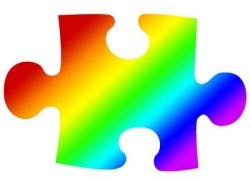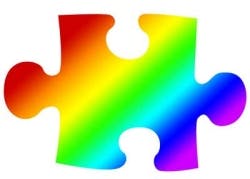What if saliva were green
Here's another easy suggestion for testing saliva levels
by Dianne Testa, RDA, RDH, BS
Our bodies are very sophisticated and can tell us many things if we just look for the clues. When you are sick,Even without the saliva actually changing colors, we can test for the acidity of the saliva, and that is just what an office in Grand Rapids, Mich., "Healthy Smile," has done. They give free saliva tests to their patients each February during dental health month.
What a great way to say, "We care about you and your teeth." Karen, the dental hygienist at this office, states, "What we are finding is that many of our current patients are so appreciative to find they may have acidic resting saliva and/or neutral activated saliva, or that their actual saliva is neutral and their risk is their intake of acidic beverages and foods."
She also states, "Ultimately, we are offering them a visible measurement to help correct this condition and implement true preventive measures to oral health."
We do not have to wait until saliva changes color; we can incorporate saliva testing today, caring for our patients at a higher level and maintaining enamel with new viable tools.
Saliva has such an important function in the body. It deserves to be looked at in a much friendlier manner. In dental offices, we often are trying to get rid of the saliva. Cotton rolls, saliva ejectors, and high volume suction are our main instruments of choice.
Maybe we need to look at it differently. It is what keeps the mouth lubricated and delivers the calcium and phosphate to the teeth. Like the Jennifer Rush song says, "You don't know what you've got 'til it's gone."
When saliva flow diminishes, many things can go terribly wrong. One, and most important to us, is the increase in caries. Patients do not always realize that they have a decreased saliva function. Testing saliva for the hydration, pH, and buffering capacity is the best way to find out the health of the patient's saliva. I like to call it "healthy or sick saliva."
Several related tests are currently on the market. The biggest downside is time. I do not have a good answer to this, but I do have a suggestion. Start with what I have labeled the "simple spit test." It consists of a piece of litmus paper and a Dixie cup. Have the patient spit into the cup, and then have them place the litmus paper in the cup. Finally, check the pH value of the saliva.
This, of course, is only a snapshot in time. But it only takes five seconds, and you will be able to catch the patients with the "sickest" saliva. If you discover they have a low pH, then reschedule the patient for a follow-up appointment (as your physician would do for additional tests) to do a complete saliva work-up. With this approach, you are on your way to buying time, healthier patients, and decreasing decay.
When it comes to saliva production, a healthy person produces about three pints of saliva per day. Saliva helps to lubricate the mouth, remineralize teeth, and is the first stage in the digestion process. Saliva also allows us to taste our food. Saliva mixes with the food, forming a liquid; this liquid washes over receptor sites (taste buds that have tiny hairs), which respond only to liquid.
Therefore, saliva plays a major role in our health. Interestingly enough, we do not even notice a decrease in the production of saliva until we are at a 50% loss of this great liquid. Medications, systemic diseases, smoking, and coffee drinking are only a few things that can decrease the saliva production.
Let's talk about the magic of the saliva in the uptake of fluoride. This takes us back to our chemistry classes. You see, the tooth is negatively charged and the fluoride ion is negatively charged; therefore, they repel each other. Lucky for us, the calcium ion in our saliva is positively charged. Thus, calcium attracts the fluoride ion and pulls it into the tooth.
This gives us something to ponder. What if we have dry mouth and decreased amount of saliva? Fluoride has now lost its chance to do its work. This answers the question of why someone with dry mouth tends to have increased decay. Who would have thought those chemistry classes would have played such a role in our daily jobs?
When recommending preventive care regimens, we have another reason to analyze our patients' saliva. Extra fluoride will not help as much in the patient with a dry mouth.
The health of our patients is our number one goal. In order to do this, we now see the importance of healthy saliva. If they have sick saliva (acidic) and decreased saliva hydration, we can predict the future of our patients' dental health – increased dental caries.
Look for remineralization products that have all the components of calcium, phosphate, and fluoride. Find products that have substantivity, which will work in the mouth for hours, not just minutes. MI paste+, from GC America, can do just that. It works, in the absence of saliva, in delivering calcium, phosphate, and fluoride for three hours. Offering our patients options for remineralization gives the dental professional another opportunity to reduce dental caries, the number one disease in the United States.
Dianne Testa, RDA, RDH, BS, received her bachelor's in dental hygiene from the University of Minnesota. Her background includes clinical practice, director of a dental hygiene program, a clinical instructor, educator, a public speaker, consultant, and MI Specialist for GC America. She currently speaks throughout the country on many topics from OSHA and infection control, radiation safety, local anesthesia, and remineralizaton of enamel. Dianne has received awards for Minnesota's Outstanding Hygienist 2000, and the faculty Innovation Award 2001. She is listed in Who's Who Among America's Teachers.
Past RDH Issues

